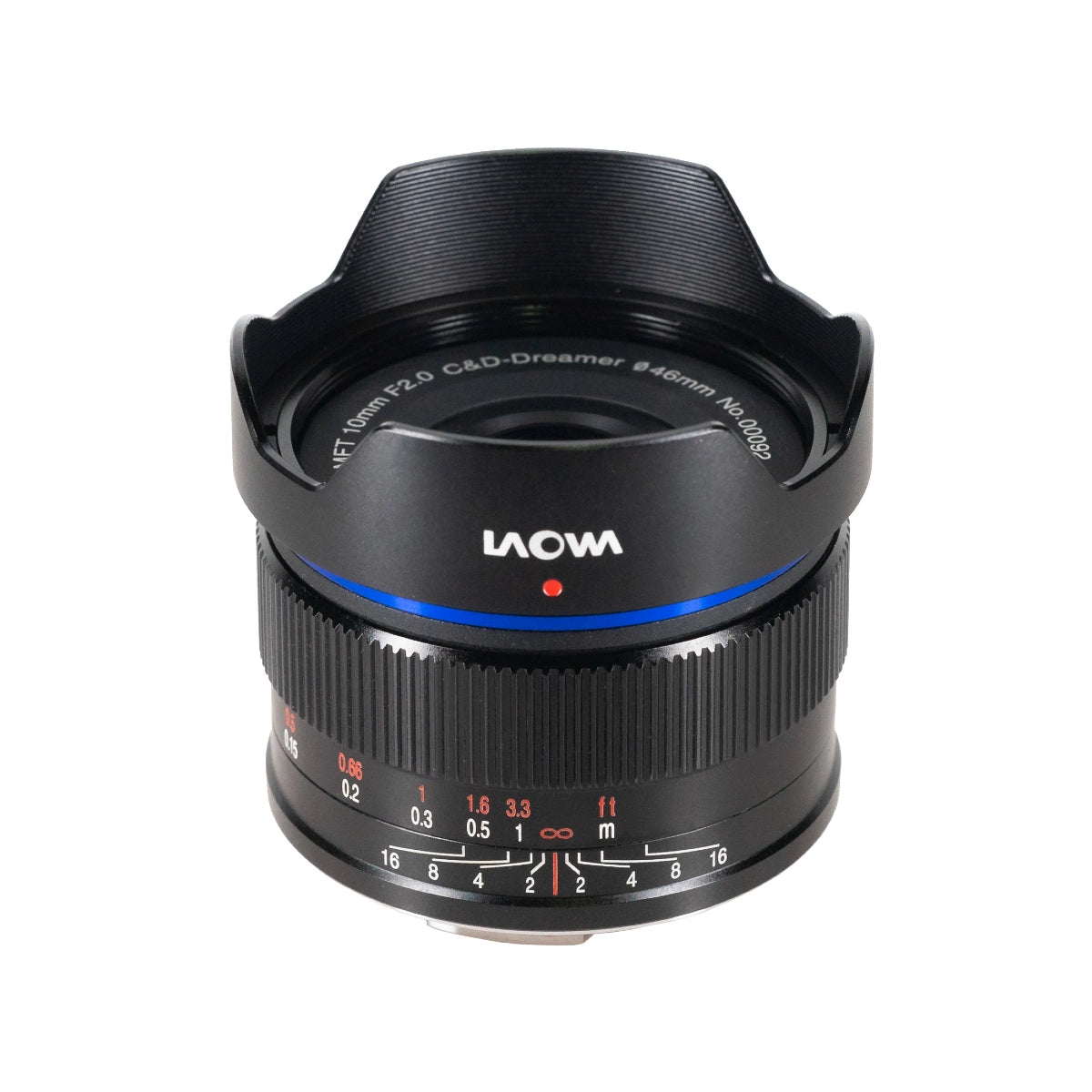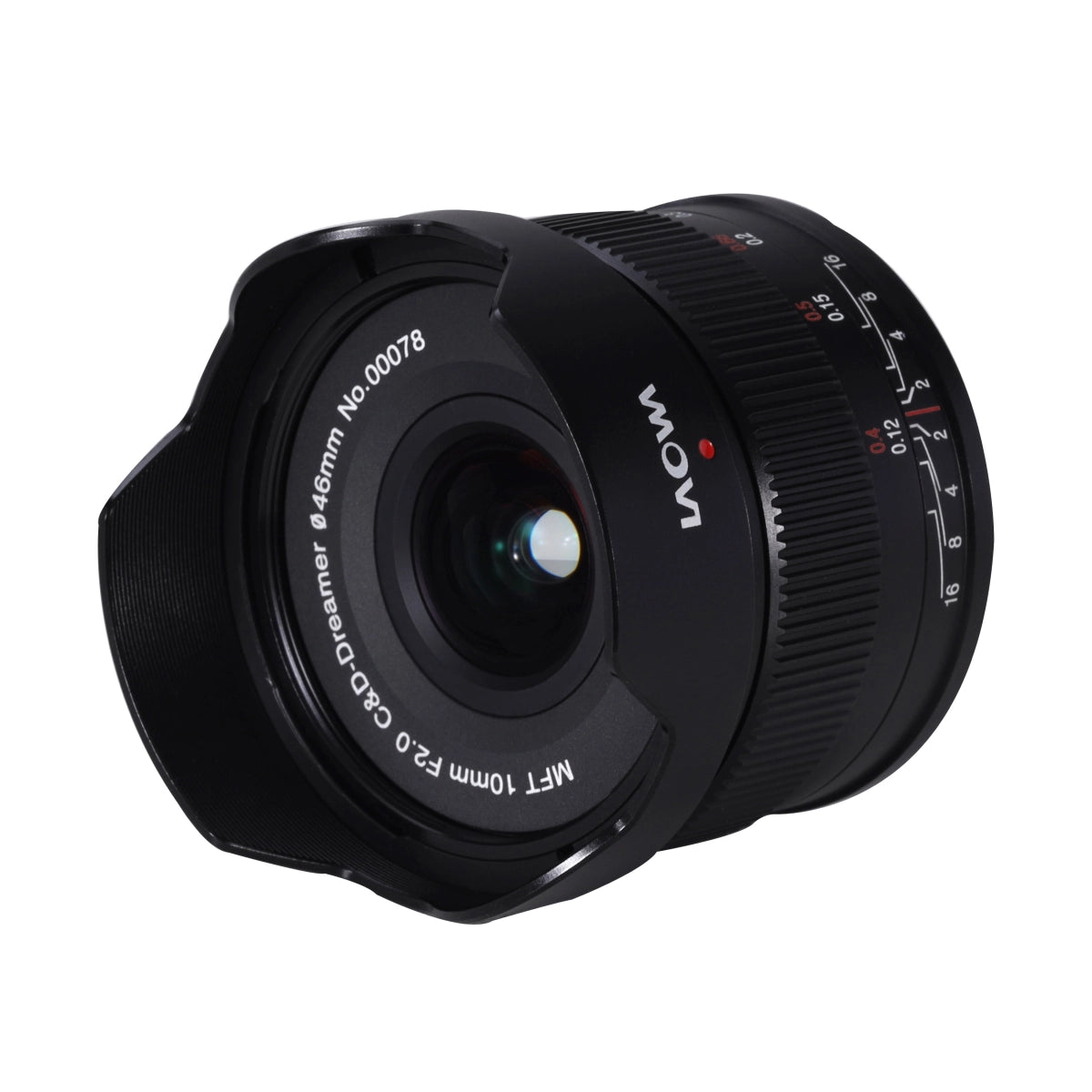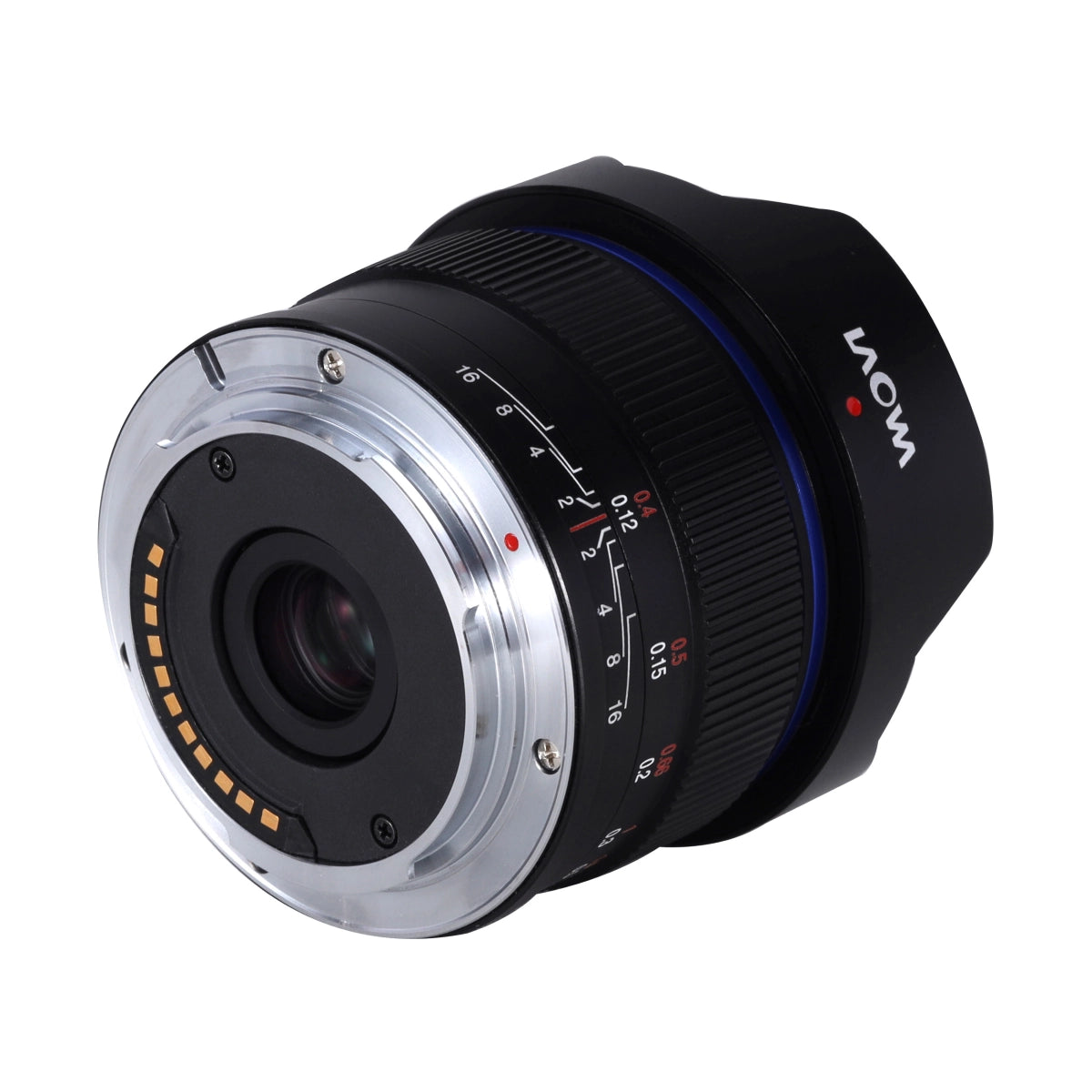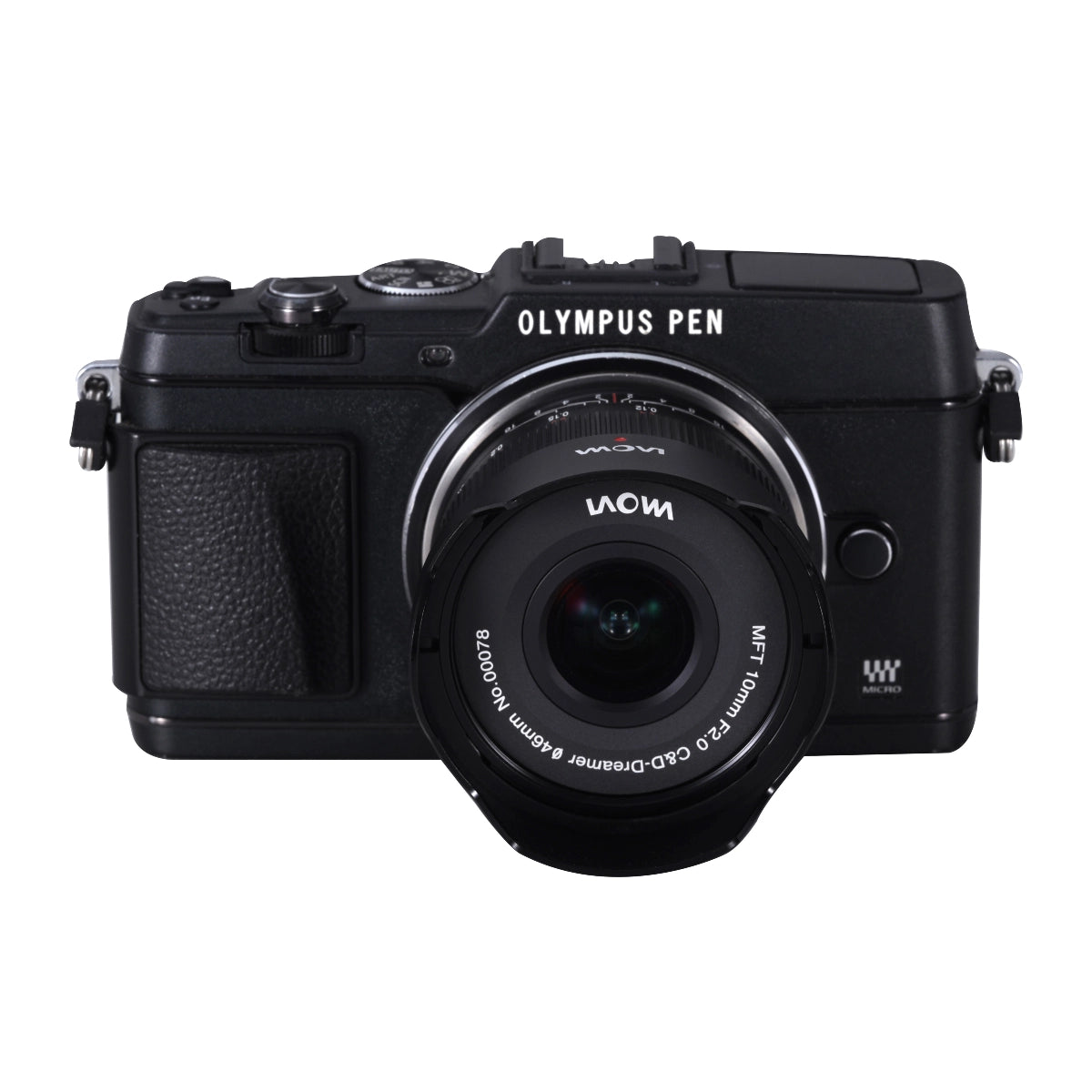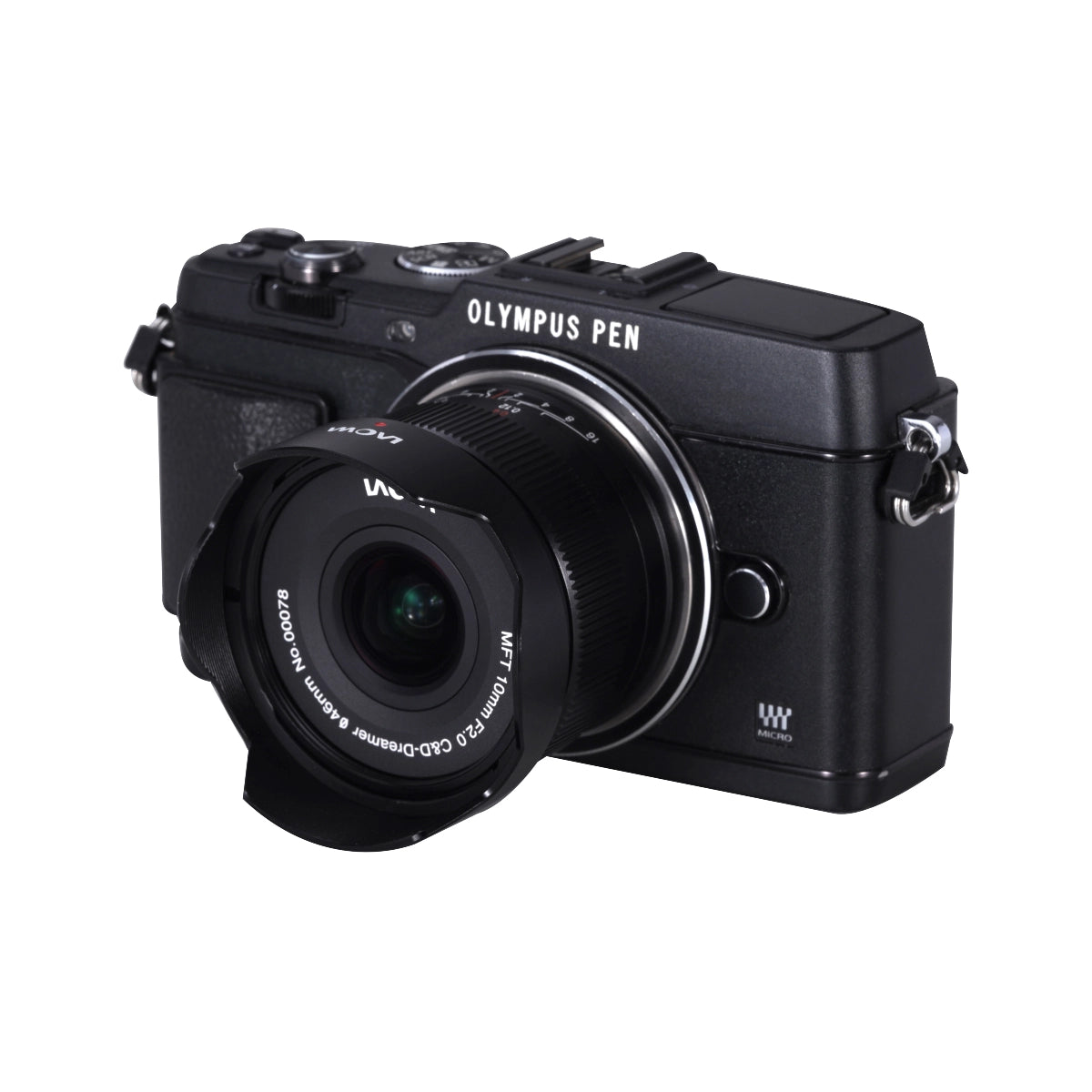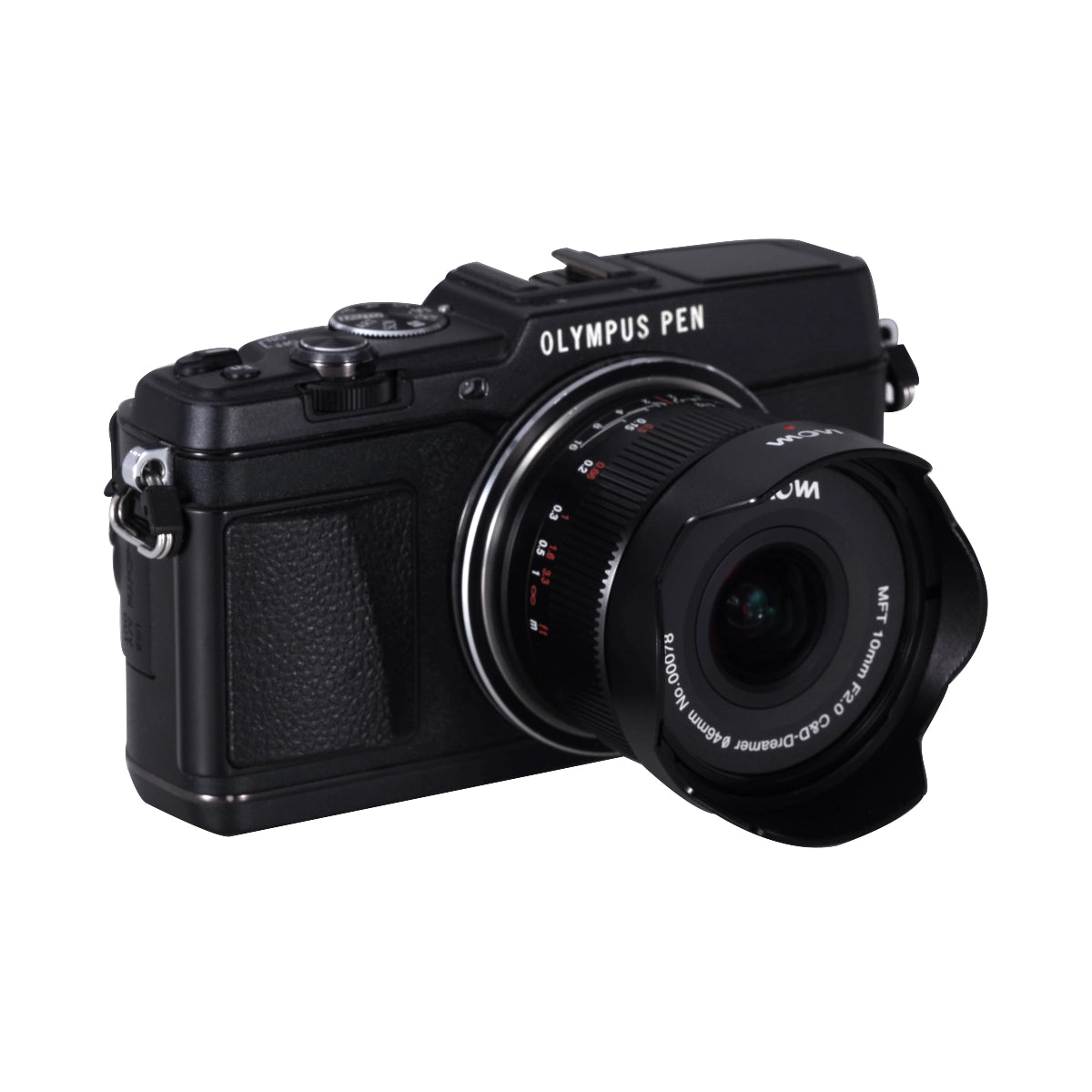Product Description
Laowa 10mm f/2 Zero-D Ultra-Wide Lens – Micro Four Thirds (MFT)
Ultra-Wide, Ultra-Fast, and Exceptionally Compact
The Laowa 10mm f/2 Zero-D MFT is a remarkably compact and lightweight ultra-wide-angle lens, designed for Micro Four Thirds cameras. Weighing just 125g and measuring only 41mm in length, this lens offers a wide 96° angle of view and a bright f/2 aperture, making it an ideal choice for landscape, astrophotography, architecture, vlogging, and drone photography.

Key Features
- Ultra-Lightweight & Compact – At 125g and 41mm in length, this lens is perfect for gimbals, drones, and handheld video work
- 96° Angle of View – Provides a wide perspective for landscapes, interiors, and dramatic compositions
- Fast f/2 Aperture – Allows for excellent low-light performance, ideal for nightscapes and astrophotography
- Zero-Distortion Optical Design – Part of Laowa’s Zero-D series, ensuring minimal optical distortion for architectural and landscape photography
- Built-in CPU & Autofocus Support – Supports in-camera aperture control and EXIF metadata recording
- Close Focusing Distance – A minimum focusing distance of 12cm allows for exaggerated perspectives and smooth bokeh effects
- 5-Blade Aperture for 10-Point Sunstars – Produces crisp, well-defined sunstars when the aperture is stepped down
- 46mm Front Filter Thread – Accepts standard filters without requiring a filter holder system

Versatile for Photography and Video
- Ideal for gimbals and handheld videography – Small and lightweight for stability and ease of use
- Perfect for vlogging and drones – A natural choice for creators who need a wide, lightweight lens
- Great for astrophotography – The fast f/2 aperture captures more light in low-light conditions

Technical Specifications
- Focal Length: 10mm (20mm full-frame equivalent)
- Aperture Range: f/2 – f/22
- Angle of View: 96°
- Minimum Focusing Distance: 12cm
- Filter Thread: 46mm
- Weight: 125g
- Length: 41mm
- Mount: Micro Four Thirds (MFT)

Why Choose the Laowa 10mm f/2 Zero-D MFT?
- Ultra-wide without distortion, perfect for landscapes and interiors
- Super lightweight and compact, ideal for travel and video work
- Fast f/2 aperture for superior low-light performance
- Supports in-camera aperture control for seamless integration with Micro Four Thirds cameras
- Close focusing distance for creative compositions

The Laowa 10mm f/2 Zero-D MFT is the ultimate compact ultra-wide lens for photographers and videographers who need a lightweight yet powerful option for their creative work.
Payment & Security
Your payment information is processed securely. We do not store credit card details nor have access to your credit card information.


